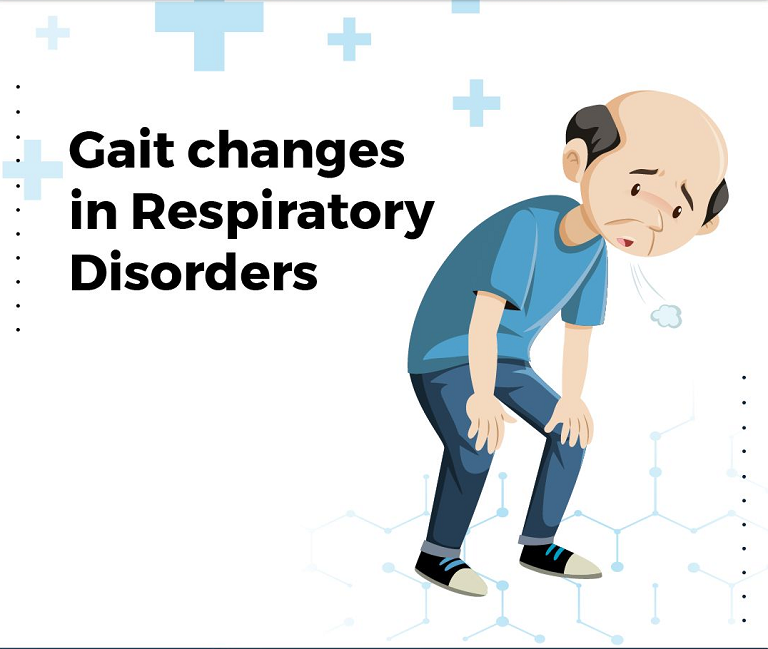
Respiratory disorders like Chronic Obstructive Pulmonary Disease (COPD) not only impair breathing but also significantly impact how we move. Studies have reported several gait changes in respiratory disorders like COPD, such as slower walking speeds, shorter stride lengths, and reduced stability.
These changes result from a combination of factors, including muscle weakness, oxygen deprivation, and the increased effort required for breathing. By understanding the interplay between respiratory health and gait, we can better address the mobility challenges faced by patients and develop effective rehabilitation strategies to improve their overall well-being.
Reasons for gait changes in COPD
- Reduced Ventilation – Hyperinflation – Incomplete Lung Emptying – Constraints on Tidal Volume – Dyspnoea.
- Level of Dyspnoea is correlated with intensity of physical activity.
Temporal gait changes in respiratory disorders
| Gait Deviations | Causes/Rationale | Consequences |
| Reduced walking speed |
| |
| Increased double support time |
| |
| Increased cadence |
|
|
Spatial gait changes in respiratory disorders
| Gait Deviations | Causes/Rationale | Consequences |
| Reduced step width |
| Can cause instability due to smaller base of support |
| Variability in step length |
| Fatigue of tibialis anterior in case of increased step length |
Increased medio – lateral variability |
|
|
Kinetic gait changes in respiratory disorders
| Gait Deviations | Causes/Rationale | Consequences |
| Reduced walking intensity |
| |
| Reduced peak dorsiflexion moment during early stance phases |
| |
Increased peak ankle power absorption in mid-stance |
| Problems in controlling foot after heel strike |
We’re happy to inform you that GaitON software also has an inbuilt Gait Analysis module which is now used by 500+ centers globally to assess gait changes in patients with respiratory disorders. It provides patient-friendly reports with reference values, automatic notes, pre-post analysis, excel export options and many more!
Reach out to us today to learn more about the GaitON software and set up your own Gait Lab!
ABOUT THE AUTHOR

GAYATRI SURESH (PT)
Gayatri Suresh (PT) is a Biomechanist who has completed her B.P.Th from DES College of Physiotherapy and M.P.T (Biomechanics) from SRM College of Physiotherapy, SRMIST. Her field of clinical expertise is in movement assessments through video analysis. Apart from her work at Auptimo, she works as a Clinical Specialist at Rehabilitation Research and Device Development, IIT Madras. She has won gold medals for her Research presentations and for securing First rank with distinction in her MPT degree respectively.
REFERENCES:
- Nantsupawat N, Lane P, Siangpraipunt O, Gadwala S, Nugent K. Gait Characteristics in Patients With Chronic Obstructive Pulmonary Disease. Journal of Primary Care & Community Health. 2015;6(4):222-226. doi:10.1177/2150131915577207
- Zago, M., Sforza, C., Bonardi, D. R., Guffanti, E. E., & Galli, M. (2018). Gait analysis in patients with chronic obstructive pulmonary disease: a systematic review. Gait & Posture, 61, 408–415. doi:10.1016/j.gaitpost.2018.02.007
- Yentes, J.M., Schmid, K.K., Blanke, D. et al. Gait mechanics in patients with chronic obstructive pulmonary disease. Respir Res 16, 31 (2015)
The information found within this site is for general information only and should not be treated as a substitute for professional advice from a licensed Physiotherapist. Any application of exercises and diagnostic tests suggested is at the reader’s sole discretion and risk.